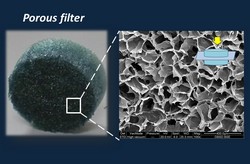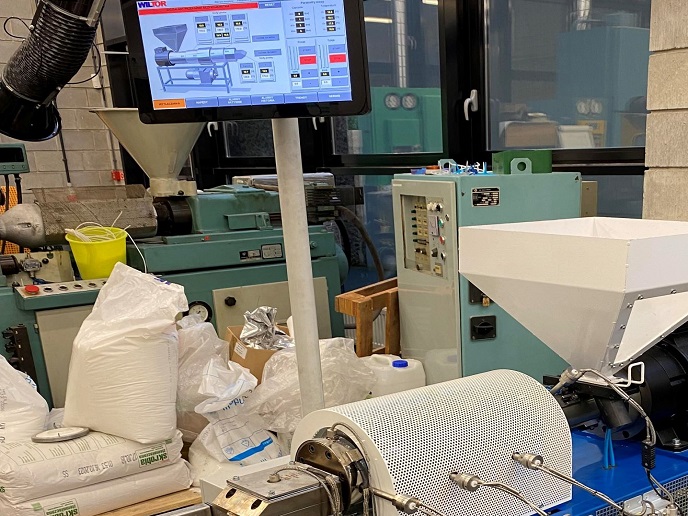Biomimetic assembly of nano-structured building blocks
Bio-inspired mineralisation processes are based on heterogeneous nucleation of nano-size inorganic phases, such as calcium phosphate or carbonate, onto 3D organic templates that assemble in a complex fashion, thanks to information exchanged at the molecular level. Many living organisms exploit this process to build structures with the functions of sustaining and protecting (i.e. exoskeletons in insects and molluscs, endoskeletons in mammals). New green chemistry procedures enable in-lab activation of the control mechanisms at the basis of such an ensemble of complex phenomena to flexibly drive the controlled formation of new hybrid materials to arrest nanoparticles in a critical size range. Possible applications are controlled heating and moisturising of medical gases, scaffolds for regeneration of dental tissues and fibrous photovoltaics to be integrated into new dye-sensitised solar cells. These new bio-inspired processes for development of smart multifunctional devices with wide application in health, environment, energy and safety were settled within work on the EU-funded project SMILEY(opens in new window) (Smart nano-structured devices hierarchically assembled by bio-mineralization processes). One of the strengths of these processes is the use of abundant and environmentally friendly raw materials such as natural polymers and fibres. These materials are blended by inducing chemical or physical linking between different biopolymers or natural fibres, thus generating composite biopolymeric matrices, used to develop nano-sized building blocks then subjected to bio-inspired assembling and mineralisation. In this context, potential materials and processes were screened and tested and the best candidates chosen for further development. Researchers built prototype devices for heat and moisture exchange (HMEs) with air filtering properties. HMEs can be used for humidifying and heating gases coming from pulmonary ventilators for patients requiring breathing support. The air filters could play an important role not only in production processes but also in situations of natural disasters, building demolition or war. The team also developed scaffolds mimicking various tissues important in dental repair, including periodontium (alveolar bone, periodontal ligament and cementum) and dentine. Dental regeneration is a still-unmet clinical need and is expected to enable a great leap forward in the quality of life of the European population. Indeed, tooth loss and impaired oral function, accompanied by a number of side-effects at a systemic level, are likely to increase and the new biotechnology developed in SMILEY will help to retain full mobility and chewing capacity even at advanced ages. Ultimately, the team investigated various natural fibres and surface modification aimed at activating surface functional groups enabling heterogeneous nucleation of inorganic nano-phases. On this basis new materials with photovoltaic properties were developed and prototypes of fibrous photoanodes were produced. The development of new flexible photovoltaics will provide an important contribution to current challenges related to energy production when integrated in garments, curtains, buildings or greenhouses. SMILEY developed nanomaterials inspired by nature for use in devices that support and protect both the environment and its inhabitants.







